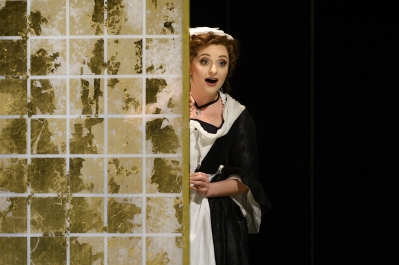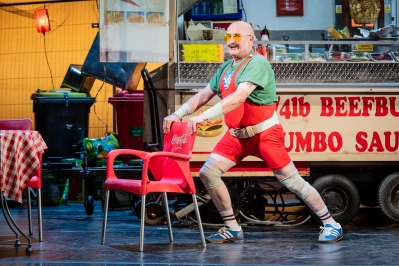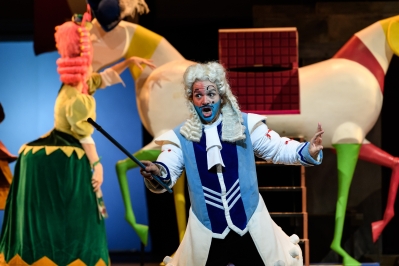Have you ever wondered why a certain group of characters seem to crop up in the theatre, opera, and film and TV, all the time? Look no further than the Italian theatre of Commedia dell’arte.
Emerging in Italy during the 16th century, Commedia dell’arte (translating to comedy of professional artists) was a theatre artform that was performed by travelling troupes of actors, bringing to life basic plots and improvised dialogue with a specific set of characters. Most stock characters of the commedia dell’arte generally fall under three categories: the Zanni (servants, tricksters and clowns), the Innamorati (young lovers), and the Vecchi (masters and the elderly).
Here is Welsh National Opera’s quick guide to some of the most famous comic characters and where they appear in the world of opera:

Pulcinella
A servant, Pulcinella is often depicted as a jester or clown. He is a cunning, self-serving chatterbox that’s often depicted with a bulging belly and a hunchback.
In opera: Rigoletto from Rigoletto; Ping, Pang and Pong from Turandot; Fool from Lear.

Columbina
A gossipy and mischievous maid, she is a comic and often flirtatious figure. She is often the confidante of her mistress, and her coquettish nature moves the romantic plot along, helping her to get one over on her male masters.
In opera: Susanna from The Marriage of Figaro; Norina from Don Pasquale; Serpina from La serva padrona.

Pantalone
An older man of the merchant class and a miserly cheapskate. He is greedy and thinks very well of himself but is vulnerable to being tricked. Often in pursuit of a younger woman.
In opera: Don Pasquale from Don Pasquale; Doctor Bartolo from The Marriage of Figaro.

Innamorati
A pair of young, upper-class lovers who are very over the top in their devotion to each other. They have to overcome obstacles the Zanni and the Vecchi throw their way to keep together. Most often a soprano and tenor.
In opera: Nemorino and Adina from L’elisir d’amore; Rosina and Count Almaviva from The Barber of Seville.

Brighella
A scheming and clever servant good at undermining his master to get what he needs. Either loveable or villainous, he has a crafty eye for business and is often a skilled musician.
In opera: Dandini from La Cenerentola; Dr Malatesta from Don Pasquale; Figaro from The Barber of Seville and The Marriage of Figaro.

La Ruffiana
A bawdy older woman of the lower classes, often a mother or a village gossip who aims to split up the Innamorati. She is sometimes married to Pantalone and can also appear as woman with magical powers or as a gypsy.
In opera: Zita from Gianni Schicchi; Ulrica from Un ballo in maschera; La Cieca from La Gioconda.

Il capitano
The Captain is a man who projects confidence and machismo, but behind the facade is a timid and fearful person. He is often large and is a key comic character.
In opera: Falstaff and Pistola from Falstaff; Canio fromPagliacci; Leandro from The Love for Three Oranges.
How about seeing these famous stock characters in the flesh? Don’t miss WNO’s performances of Rigoletto and Gianni Schicchi this Autumn Season, and The Marriage of Figaroin Spring 2025.



